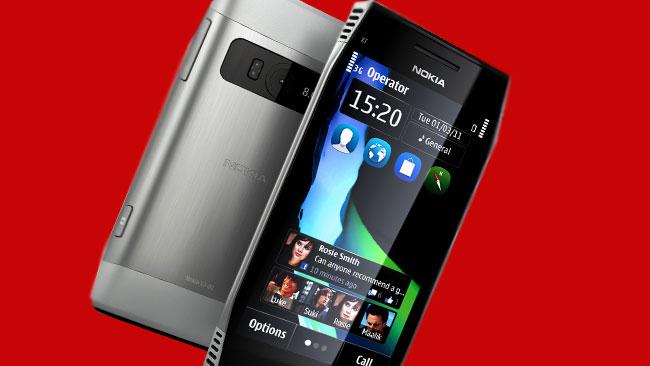iPhone most popular as Nokia crashes
APPLE has spectacularly displaced Nokia as the most popular mobile brand in Australia, while Android continues its march to eventual dominance.

APPLE has spectacularly displaced Nokia as the most popular mobile brand in Australia, while Android continues its march to eventual dominance, according to new figures by research firm IDC.
Its first quarter 2011 figures show that in just 12 months, Nokia has not only lost market dominance, its phone market share has halved: from 49.5 per cent in the first quarter of last year and 44.2 per cent in Q4, to just 24.6 per cent in the first quarter this year.
Nokia Series 40 feature phones and Symbian smartphones have been dominant worldwide. Market analyst VisonMobile previously estimating that 1.5 billion S40 phones and 385 million Symbian phones had been sold by the end of 2010.
But in Australia, IDC found that Nokia's nose-dive in the mobile phone market share was matched by the overall collapse of the traditional feature phone market which was just 21 per cent of the Australian market.
To add further to Nokia's woes, the operating system it's pinning its future success on -- Microsoft's Windows Phone 7/8 -- is yet to catch on in Australia, and while it is early days, IDC said Windows Phone's take up in the first quarter this year was down slightly compared with the fourth quarter last year.
If replicated worldwide, these figures will be discouraging to both the embattled Finnish phone maker and Microsoft, who have forged an alliance to put Windows Phone software onto new Nokia handsets starting next year.
"Nokia suffered a double whammy, the feature phone market collapsed, with 79 per cent of new mobiles shipped now being smartphones,'' IDC telecommunications analyst Mark Novosel said.
Mr Novosel said Symbian's loss of 9.5 per cent market share in one quarter was more than double IDC's forecast decline.
"We expected Symbian to decline steadily throughout 2011, however the pace of decline has exceeded all expectations, with the majority of would-be Symbian buyers heading to Apple," Mr Novosel said.
Apple, meanwhile, is riding high with 31.4 per cent of the overall mobile phone market share in Q1, up from 18.8 per cent in the fourth quarter of 2010, and close to 40 per cent of the smartphone market.
IDC said Apple had become the top mobile device vendor in Australia for the first time, with nearly one third market share. Despite a 5 per cent year-on-year dip in the mobile phone market, iPhone shipments had soared 13 per cent in a quarter.
Android meanwhile was going from strength to strength. In just one year, Android's smart phone market share had sky-rocketed from 2.1 per cent in the first quarter of 2010 to 29.7 per cent in the same period this year.
"Android remains on track to become the most popular smartphone OS in Australia this year, although Apple is doing its best to delay Android from reaching this milestone," Mr Novosel said.
"The weakness in Symbian and slow initial growth of Windows Phone are providing a stimulus for iOS and Android, which will battle head to head for the top spot in 2011.''
IDC said Apple was likely to experience a dip in the third quarter as the market eased ahead of the likely release of a new iPhone model in spring locally.
"Meanwhile the wide range of Android flagships that will launch in Q2 and Q3 should see strong growth,'' Mr Novosel said.
"In the fourth quarter, Android flagships will see price cuts to lure Christmas shoppers and enable them to better compete with the expected new iPhone.''
Samsung had managed to make a smooth transition from feature phones to top-end Android phone. IDC said that a year ago, Samsung's 12.6 per cent of market share was mainly feature phones, it's 14.4 per cent share now predominantly was Android.
In the smartphone market, Samsung and HTC were virtually neck-and-neck with 9.4 per cent share each.
The market position in Australia of Research In Motion's BlackBerry handsets remained in slow decline. While overall shipment figures were up, BlackBerry has gone from 8.9 per cent of smartphone sales in the first quarter of 2010 to 6.7 per cent in the same quarter this year.
RIM however has been buoyed by recent sales to Asia and emerging markets in Indonesia, Thailand, and the Philippines.
IDC in another survey had estimated that RIM shipped 1.5 million BlackBerry devices to Asia in the first quarter of this year and Asia accounted for 11 per cent of its global shipments in Q1 2011.
Mr Novosel said 2011 would continue to be an increasingly difficult year for Nokia, as consumers side-stepped Symbian smartphones and feature phone popularity continued to dwindle.
Microsoft also faced a tough year with slow Windows Phone 7/8 growth expected, as the iOS and Android tussle intensified.
"As Nokia launches its first Windows Phone models in early 2012, and Symbian shipments eventually stop, Microsoft should start to see an uplift,'' Mr Novosel said.


